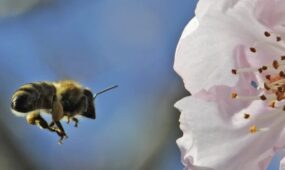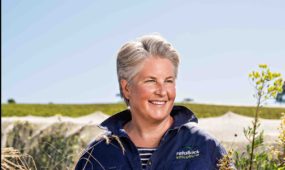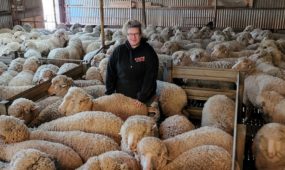Bird's-eye view of vine health
Primary Industries
REMOTE sensors and aerial imagery are being used to maximise irrigation efficiencies in one of Australia’s most famous wine regions.

Sign up to receive notifications about new stories in this category.
Thank you for subscribing to story notifications.
The project in South Australia’s Coonawarra region aims to help viticulturists understand how remote-sensing technologies can rapidly identify canopy temperature, vine water stress and nutrient status issues.
It used images taken by three cameras fitted to a fixed-wing Cessna aircraft as it flew about 300 metres above the vineyards. Viticulturists and researchers from the University of Adelaide also collected data on the ground from vines across the 22 vineyard blocks involved in the project.
The data was then used to measure chlorophyll levels, vine canopy temperatures and growth and converted it into maps on a block-by-block basis.
Project leader and Wynns Coonawarra Estate viticulturist Cath Kidman said the three cameras captured thermal, NDVI (Normal Differential Vegetation Index) and Chlorophyll Index images.
She said data from a network of weather stations in the area and the full suite of data would be used to model irrigation schedules.
“We’re gaining ‘real-time’ information that can be accessed within 3-4 days of an initial fly-over, which in turn means that growers can potentially make strategic irrigation decisions a whole lot earlier than was previously possible,” Dr Kidman said.
“While we are still in the early stages of data analysis, the imagery is definitely showing a lot of promise because you can see instantly the variations in a vineyard block.”
Dr Kidman said while the data analysis could expose nitrogen and fertiliser issues, possible soil structure problems and irrigation inefficiencies, it also raised a raft of questions and opportunities for further vineyard trials.
“The aim is to see whether remote sensing is a viable technology to use for irrigation scheduling in viticulture but potentially it could have flow on effects to other horticulture and agriculture industries,” she said.
“We’re undertaking this project with a commercial hat on, not a research hat. This is all about working as a community to innovate and enhance grape and wine quality, whilst conserving Coonawarra’s precious groundwater.”
Dr Kidman said the aerial sensing in the trial covered about 1000 hectares while the ground crews assessed 150 hectares within the aerial zone.
She said the cost of the sensing flights and ground measurements would need to be measured against efficiency savings and crop improvement before a decision could be made on the long-term viability of the methods.
The project will ultimately review vine water status in relation to fruit quality across YAN, Ph, TA, colour, tannin and Brix.
“We’ve been really heartened – it’s proving to be a really good surrogate for irrigation scheduling and for giving us an idea of crop water stress and we’ve got some really useful case studies coming out,” Dr Kidman said.
The South Australian Government contributed $40,000 to the Innovative Coonawarra Grape and Wine Incorporated pilot project.
South Australia is consistently responsible for almost 50 per cent of Australia’s annual production.
The Coonawarra is among 18 wine regions in the state and is famous for its full-bodied cabernet sauvignon.
Katnook Estate Vineyard Manager Chris Brodie said data from the first flyover of his vines highlighted some areas that were clearly under stress, prompting the replacement of 50 irrigation lines within a month. He said data generated by a second flight a month later clearly showed the vines in the affected area were recovering and experiencing less stress.
“Accessing actual vine water stress information in a timely and relevant way means that our company can use water more efficiently … and potentially, improve the quality of our wine,” Brodie said.
A final report on the results of the trial flights and data gathering is due later this month.
Jump to next article



